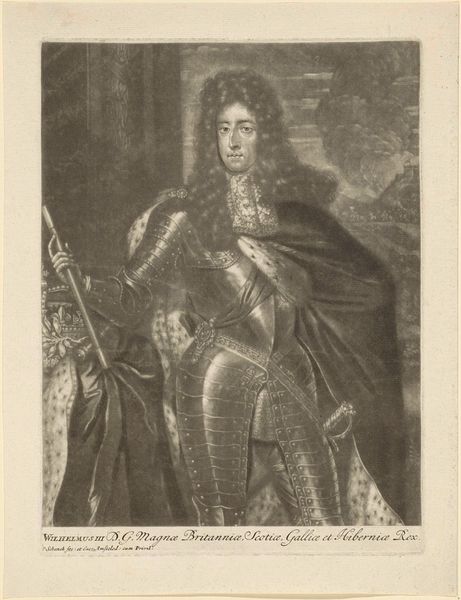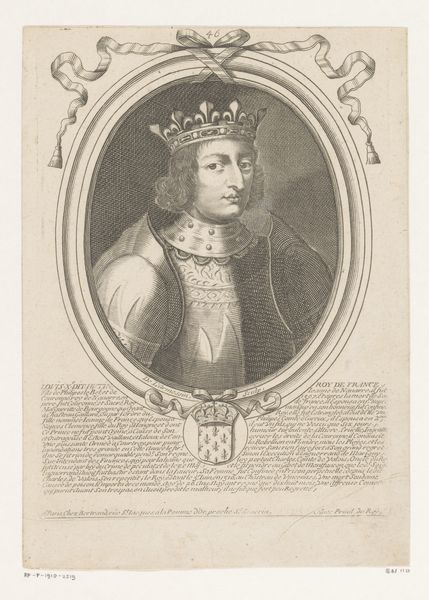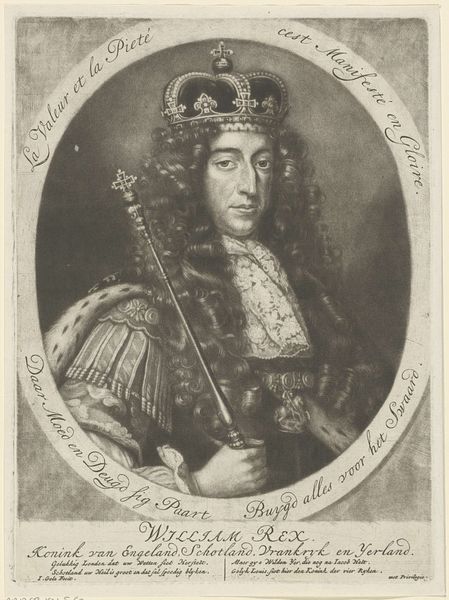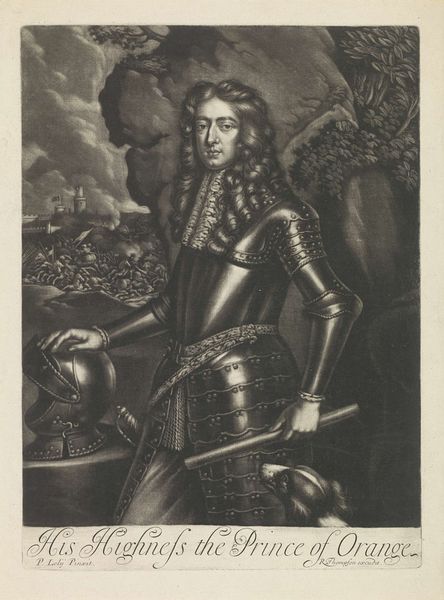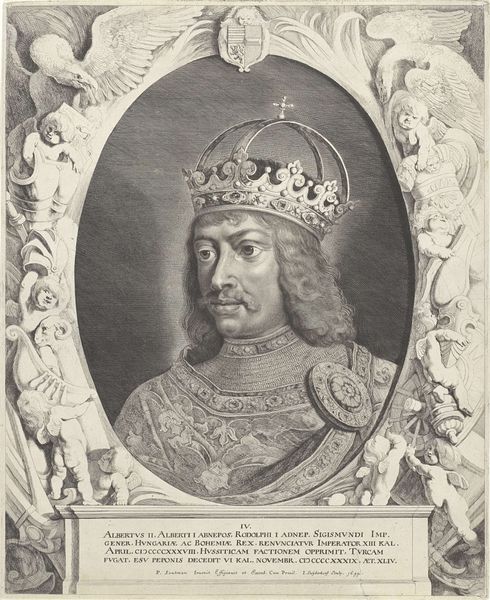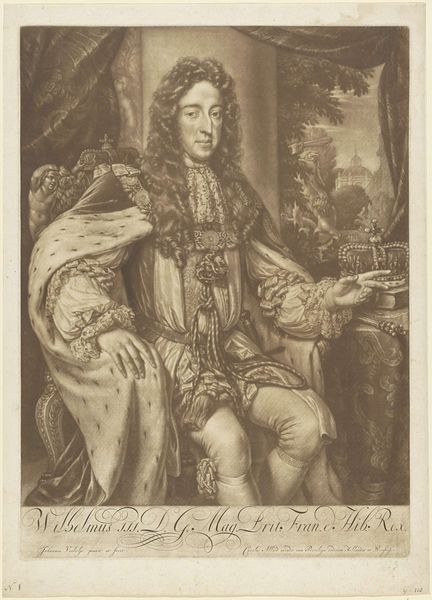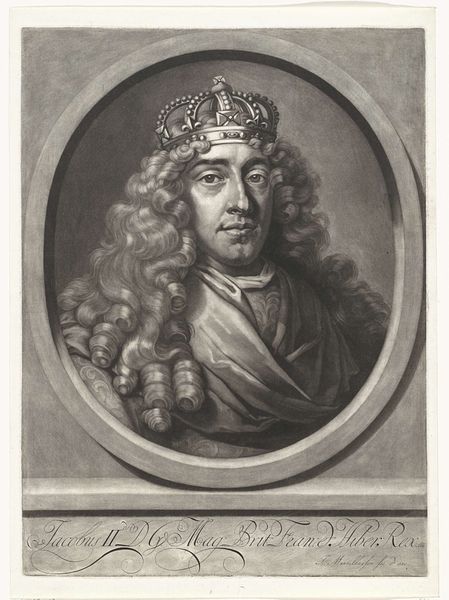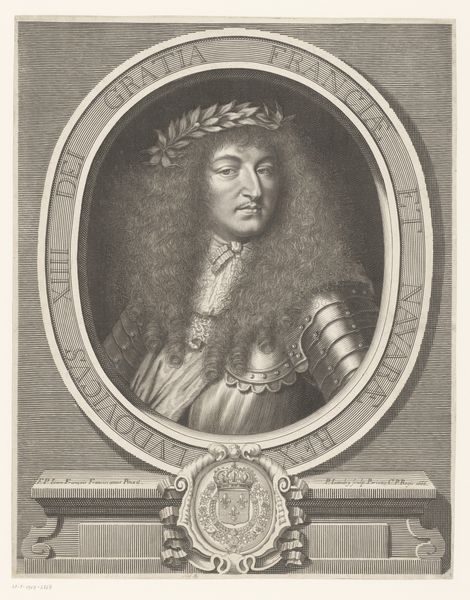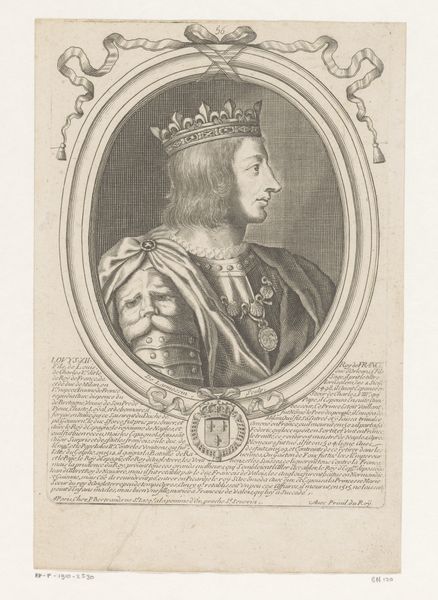
#
pencil drawn
#
toned paper
#
light pencil work
#
pencil sketch
#
charcoal drawing
#
charcoal art
#
pencil drawing
#
watercolour illustration
#
pencil art
#
watercolor
Dimensions: height 441 mm, width 318 mm
Copyright: Rijks Museum: Open Domain
Curator: This portrait, made between 1688 and 1709, presents Willem III, Prince of Orange. Jacob Gole's use of pencil on toned paper offers a fascinating glimpse into the representation of power in that era. What strikes you immediately about this artwork? Editor: It has a surprisingly delicate quality. For a depiction of a king, especially one associated with such significant political events, the lightness of the pencil work seems almost at odds with the subject. It gives an impression of fragility beneath all the regalia. Curator: That contrast is intriguing. Gole's choice of materials—the pencil, the toned paper—speaks to a different kind of artistic economy. Unlike grand oil paintings reserved for the elite, this print could have been produced in multiples, broadening its reach and influencing popular perception of Willem. The very act of creating and distributing prints democratized the image of power to some degree. Editor: Indeed. Thinking about the composition, the meticulous rendering of the crown, the lace, and the ermine robe points to a specific, visually defined ideal of kingship. These symbols, so carefully delineated, served as potent signifiers, didn't they? The crown sits at the apex, anchoring a visual hierarchy that suggests absolute authority. Curator: Absolutely. Consider the paper itself. Its tone serves not just as a ground but contributes to the overall mood, softening the sharp lines and adding depth. Moreover, printmaking was a business. Gole and his contemporaries were not just artists but entrepreneurs operating within a specific economic structure, selling images and ideals to a growing market. Editor: But beyond the material conditions, I can't ignore how Gole's artistic decisions manipulate light and shadow to subtly model the King's face and convey a sense of dignity or even vulnerability. It’s skillfully done; the technical handling underscores Willem's humanity behind the royal facade. Curator: Ultimately, this work provides a compelling reminder that representations of power are always mediated through specific materials and processes, impacting who gets to see it and how they interpret its message. Editor: And when we look closely, as we have here today, even within an ostensibly simple drawing, complex artistic choices profoundly influence meaning and our own perception of a historical figure.
Comments
No comments
Be the first to comment and join the conversation on the ultimate creative platform.
